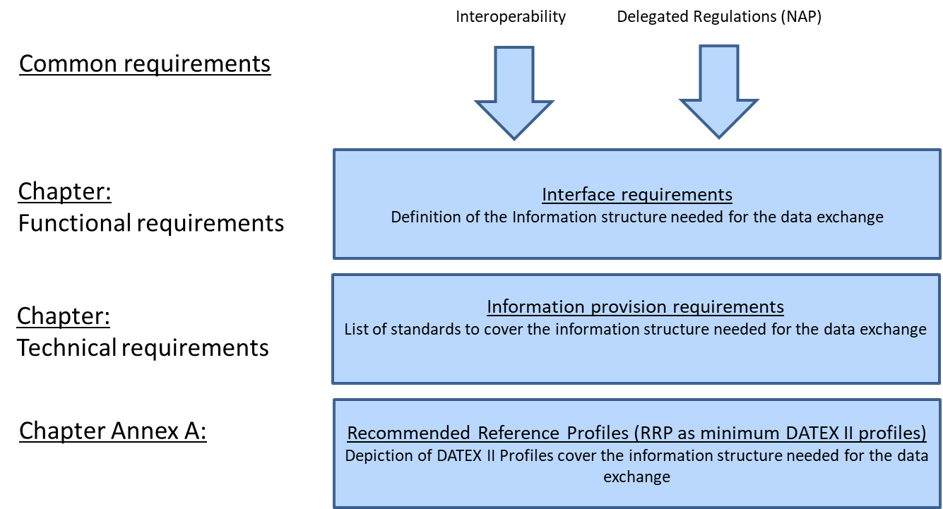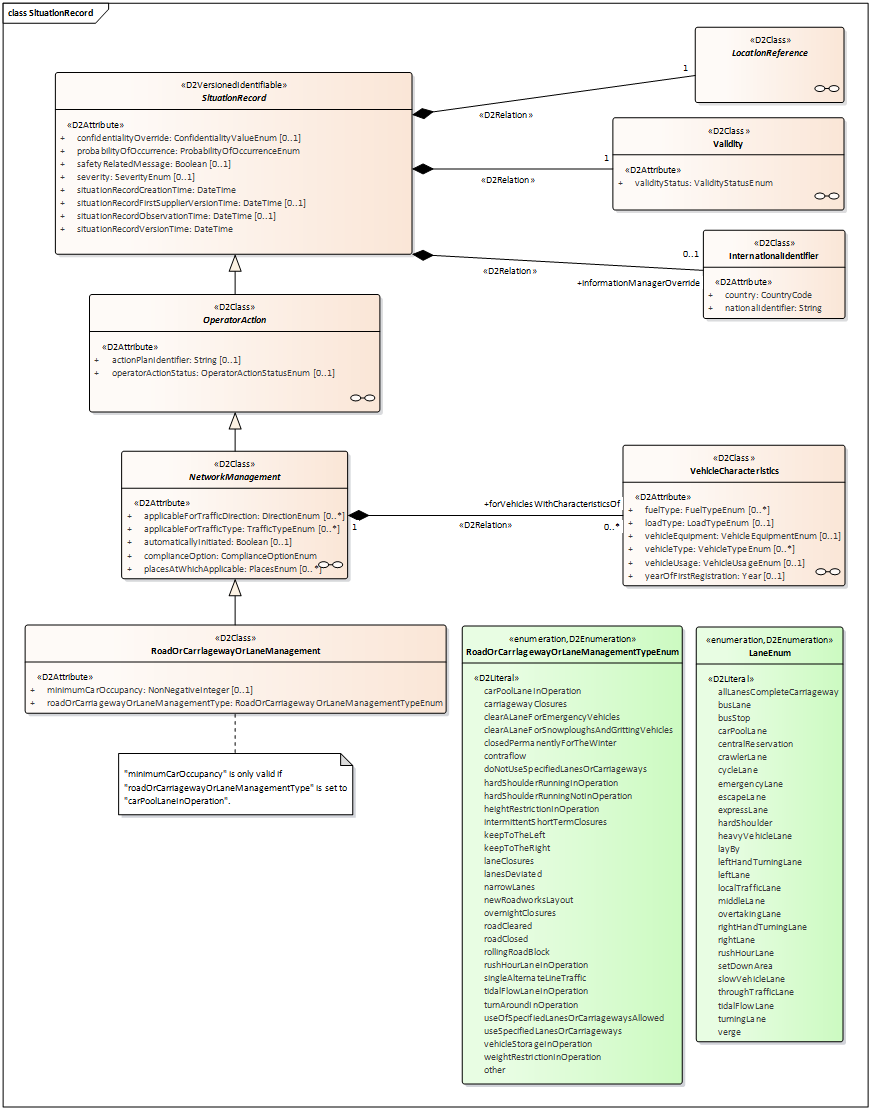Affected ITS-Core Services:
All ITS-Services are affected!
Background
General introduction
DATEX II is the electronic language used in Europe for the exchange of traffic information and traffic data. The development of DATEX was initiated in the early 90s because of the need to exchange information between traffic centres of motorway operators. Soon there was the need to open this information to service providers. DATEX “I” was strongly linked to the arising standard of road information, ALERT-C for RDS-TMC broadcasting support. Built with the technical tools and methods of that time, it was somewhat too limited for evolving with the Internet boom, which is why DATEX II was developed in the early years of this millennium. By means of DATEX II, traffic information and traffic management information is distributed in a way that is not dependent on language and presentation format, avoiding re-keying, misunderstandings and / or translation errors by the recipient. Nevertheless, the recipient can still choose to combine it with spoken text, an image on a map, or to integrate it e.g. in a navigation service’s route calculation. The increasing scale on which ITS services are being dimensioned, as well as the new digitization requirements arising from self-driving cars, requires increased use of standards and thus also challenges the DATEX II community accordingly.
The DATEX II organisation is open to all stakeholders in the traffic management domain (road authorities and road operators) that want to participate in the development, maintenance and user support of DATEX II.
- Some activities of the DATEX II organization are funded by EU CEF Programme Support Action (PSA) Agreement number MOVE/C3/SUB/2015-547/CEF/PSA/SI2.733309 RWS.
- The governance of the DATEX II organization is controlled by the “Rules of Procedure of the DATEX II organization”, see https://datex2.eu/sites/default/files/2018-09/20170612_DATEX_II_-_Rules_of_Procedure_DATEX_II_CEF_CEDR_Final_version_1.0.pdf. These rules apply to all partners in the DATEX II organization.
- DATEX II is a multi-part standard, maintained by CEN Technical Committee 278, Road Transport and Traffic Telematics, see www.itsstandards.eu.
- The first six parts of the CEN DATEX II series CEN/TS 16157 have already been approved as Technical Specifications in 2011-2015. The first three parts and the seventh part of the CEN DATEX II series have meanwhile been approved as European Norms CWEN/EN 16157. Two new parts (part 8 and 9) are currently approaching the final ballot stage.
- Context and framework
- Location referencing
- Situation publication
- Variable Message Sign (VMS) Publications
- Measured and Elaborated Data Publications
- Parking Publication
- Common data elements
- Traffic management publications and extensions dedicated to the urban environment
- Traffic signal management publications dedicated to the urban environment
Use of DATEX II for EU-EIP Services Deployment Guidelines
To ensure interoperability for the exchange of data and information between different organisations or distributed technical subsystems (traffic information centres, traffic management centres, national access points) that are involved in the provision of an ITS core service along its value chain, concrete requirements are formulated in the deployment guidelines in various chapters that build on each other.
- Chapter „Functional requirements“ defines the information structure for data exchange, as far as relevant with reference to and in conformity with the Delegated Regulations of the European Commission published by ITS-Drective 2010/40. Such information requirements are called „Interface requirements“
- In chapter „Technical Requirements“, section „Information provision requirements“, the standards that are required to implement the above mentioned Interface requirements are formally listed and, if necessary for better understanding described verbally. If Information provision requirements are DATEX II standards, the minimum requirements for DATEX II classes, attributes, and enumeration values, called Recommended Reference Profiles (RRP), are defined here.
- In Chapter 7 Appendix A, the Recommended Reference Profiles (minimum DATEX II profiles) are graphically displayed for each ITS Core Service. These data profile requirements correspond to DATEX II Version 3.
Figure 6 explains the context:

For each set of data profile requirements, UML class diagrams (see example Figure 7) representing the respective data elements are provided and explained. Selection files for creating Recommended Reference Profiles according to the specified requirements are available on the website www.datex2.eu.. It will help developers implement services.
